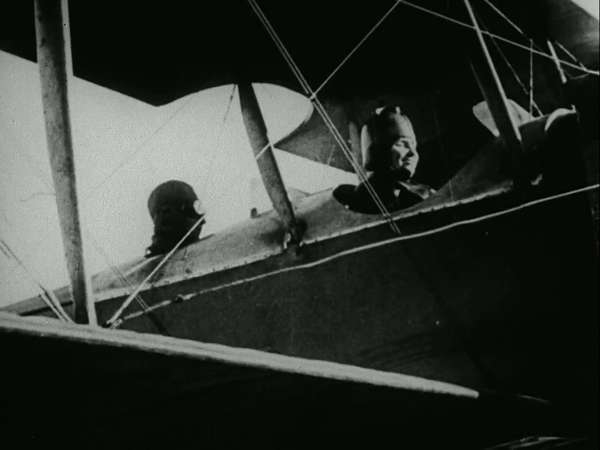In June 1946 an airplane traveled from Rome to Paris, crossing over the Mediterranean Sea. There was nothing unusual about this flight except one thing: for 20 minutes of the plane’s journey, one of its passengers became its pilot. The passenger was Dr. Helen Keller, an American author, educator, and activist who since childhood had been both blind and deaf.
Though many women of her generation would rarely—or never—travel via airplane, this was not Keller’s first time in the air. Her first flight as a passenger took place in 1919 on the set of Deliverance, a biographical film about her life in which she actually appeared. Though Keller had been known across the United States by the time she was 16 and internationally by the time she was 24, some of the public still doubted that a blind and deaf person could successfully communicate with hearing people or graduate from college—both of which Keller had already achieved. To combat this skepticism, Deliverance’s producers wanted, as they explained, “to show her doing all those things that [able-bodied] people do,” including “scenes in which she dresses herself, just to show the public that she can, and in which she sleeps, to prove to the curious that she closes her eyes.” And since the airplane, still a new technology at that time, was all the rage, the producers decided they should show Keller flying too.
Though Keller knew the inclusion of the scene in an allegedly biographical feature was absurd (and she frequently quarrelled with the production team when she found their script unrealistic), she was thrilled to have the opportunity to fly. A newsreel narrated the event, possibly as promotion for the film:
Helen Keller herself has never feared physical action. As a child, she learned to dive into the ocean with a rope about her waist, tied to a stake on the shore. She has enjoyed tobogganing, dropping down steep New England slopes. And she knows too, that if it will serve to rouse the public interest in the capabilities of the blind, almost anything she can do to get attention with be justified.…Helen is in the air for half an hour, and says she feels more physical freedom than ever in her life.
As flight technology improved, Keller found more opportunities to feel that physical freedom. In 1931 she was a passenger on an extended flight from Newark, New Jersey, to Washington, D.C., a 200-mile (322-km) journey that culminated in a meeting with the president of the United States. The New York Times covered the flight, reporting that Keller likened the plane to “a great graceful bird sailing through the illimitable skies.”
And that brings us back to 1946: the year Helen Keller piloted a plane herself.
Keller and her companion Polly Thomson, who translated Keller’s speech to others and spoke to Keller by pressing symbols into her hand, were traveling to Europe (and, later, India, Africa, and the Middle East) on behalf of the American Foundation for the Overseas Blind. When the small plane crossed the Mediterranean, Keller took over the pilot’s controls.
Later she would tell the story to a Scottish reporter “by the same means as she piloted the ’plane, through hand ‘talk’ between herself and [Thomson].” Thomson signed to Keller the pilot’s instructions as, in the copilot’s seat, Keller took over. “The ’plane crew were amazed at her sensitive touch on the controls,” Thomson said. “There was no shaking or vibration. She just sat there and flew the ’plane calmly and steadily.” As pilot, Keller felt “the delicate movement” of the airplane better than ever before.
Though news coverage treated the flight as miraculous, Keller isn’t the only deaf-blind person to fly a plane. For example, in 2012, 15-year-old Katie Inman (who, like Keller, primarily used tactile sign language to communicate) piloted a plane in Florida. A flight instructor assisted her through the takeoff and landing, handing over the controls when the plane leveled out at 2,600 feet (about 792 meters).
Skepticism regarding the capability of deaf-blind people didn’t end in Keller’s lifetime. Still, her reputation as a writer, communicator, and activist (and one-time pilot) helped remove the social stigma surrounding blindness, which at the beginning of her career was often associated with venereal disease. Before Keller, blindness was a taboo topic for women’s magazines; when she became a public figure, even the Ladies’ Home Journal published her writing on blindness and disability. With Keller writing books, lecturing, and flying a plane, public ignorance regarding the deaf-blind could no longer be left unacknowledged.

